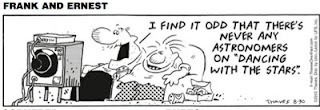Two factual errors right of the bat:
The fact that the discipline of economics hasn’t helped us improve our predictive abilities suggests it is still far from being a science, and may never be. Still, the misperceptions persist. A student who graduates with a degree in economics leaves college with a bachelor of science, but possesses nothing so firm as the student of the real world processes of chemistry or even agriculture.Trivially, many economics degrees (including mine) are bachelor of arts degrees rather than bachelor of science degrees. This is easy to check, these science-minded authors (and the armies of fact-checkers at the NYT) could not be bothered.
More importantly, how is it a fact that economics has no predictive power? Economists find evidence consistent with their theories all the time. The journals are filled with such evidence. Demand curves sure seem to slope down pretty much always and everywhere. Socialism (the real kind where the government runs the economy) actually did collapse due to the coordination problems outlined in the socialist calculation debate. Even more esoteric bits of economics like signalling models have fine bodies of evidence. This sure seems like predictive power to me.
As with other articles of this sort, the authors suffer from two primary confusions. First, they confuse a subset of macroeconomics with all of economics. More importantly, they fail to see that a theory that predicts what we cannot predict is itself interesting, useful and compelling. John Cochrane at Chicago has made this point forcefully on his blog (not the exact post I remember ... couldn't find that one). Indeed, they fail to even mention this possibility.
A secondary confusion is that they talk as though theory were useful for policy without evidence, a view in the spirit of that advanced by some Austrian economists. In my experience, knowing the sign of a relationship, which is what theory typically provides, rarely suffices to make actual policy choices. Usually you need magnitudes as well, as theory often lays out forces operating in opposite directions.
In short, I read this piece as a great big muddle.
Hat tip: Tanya Byker
